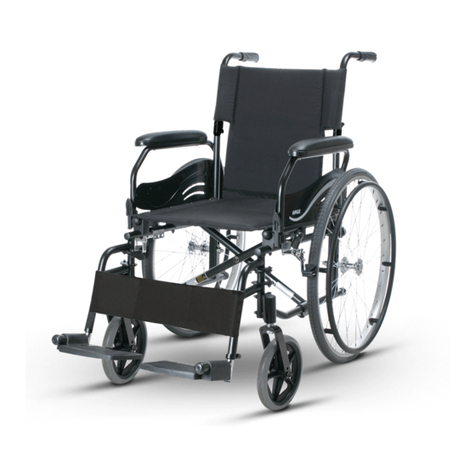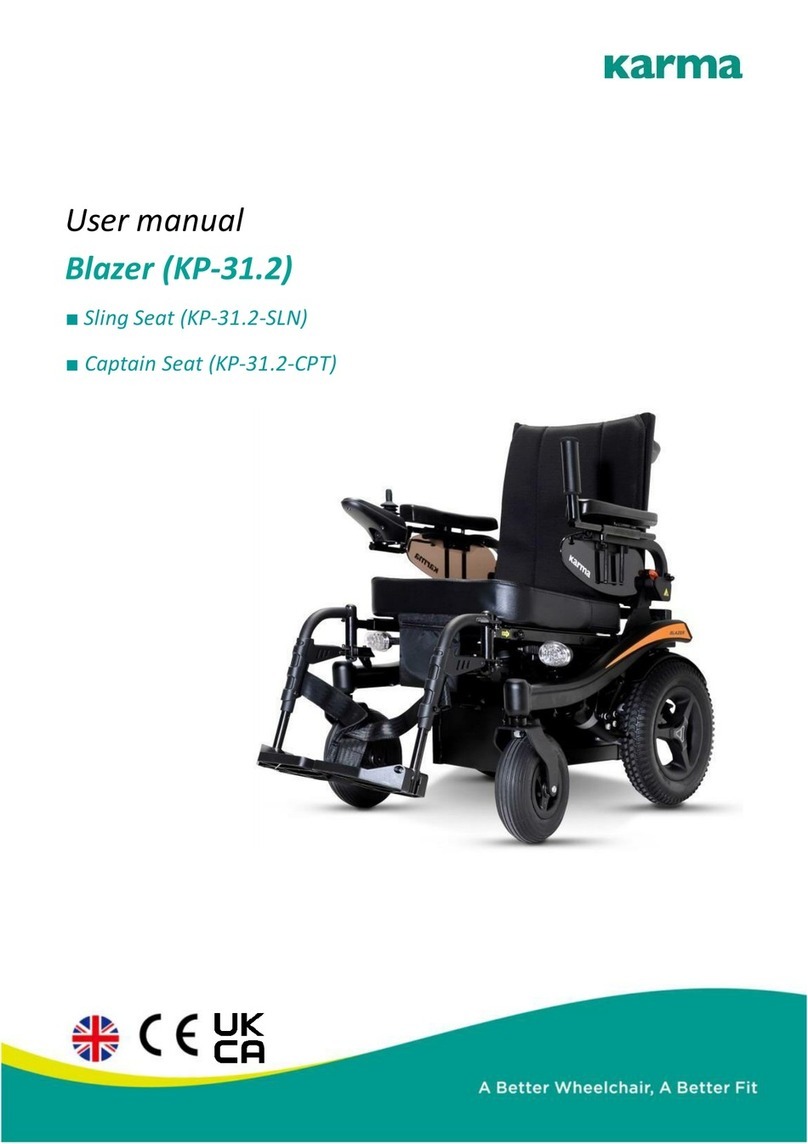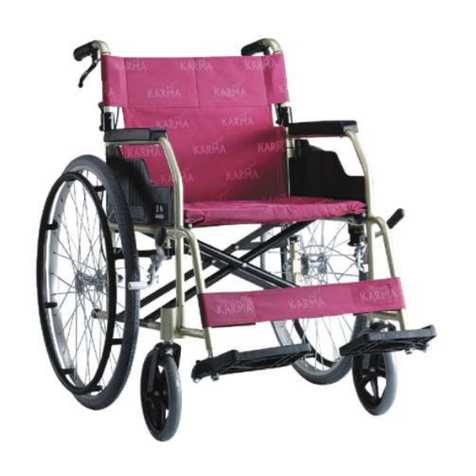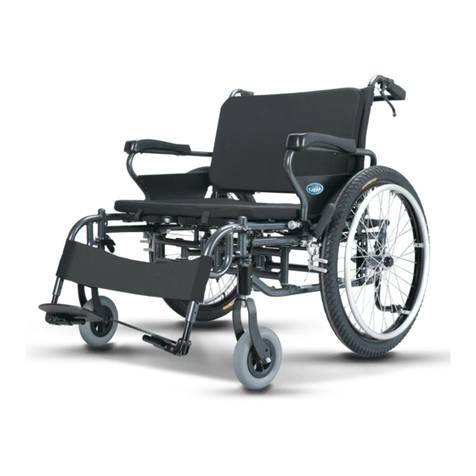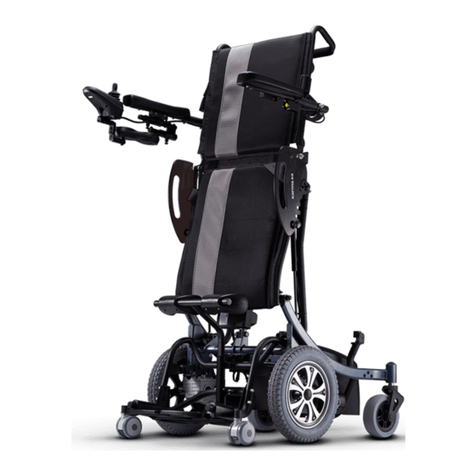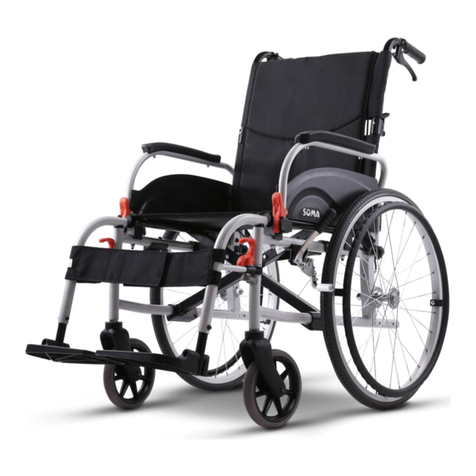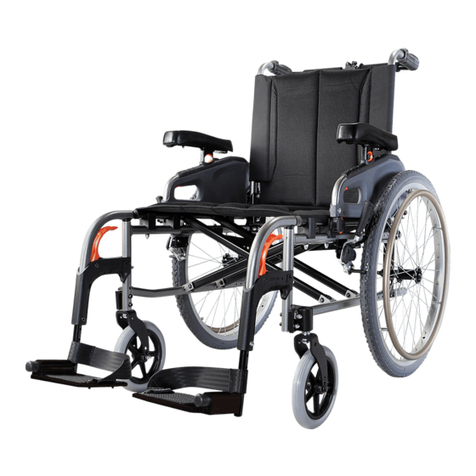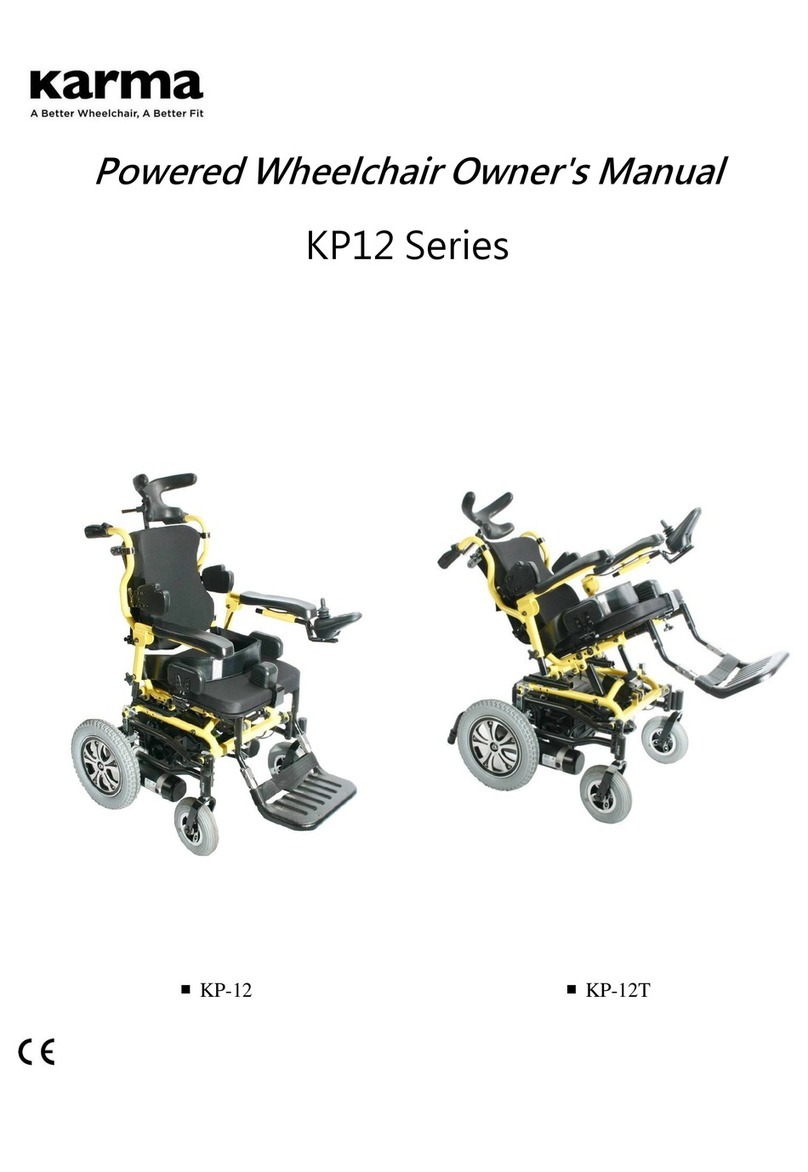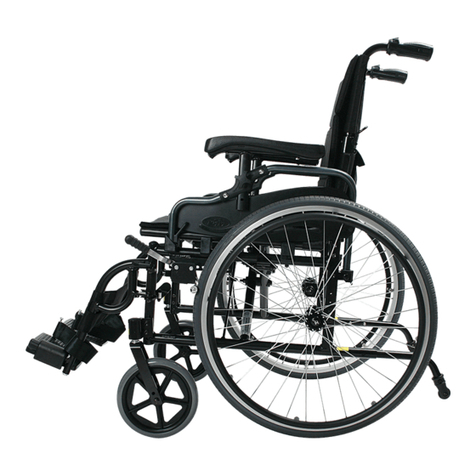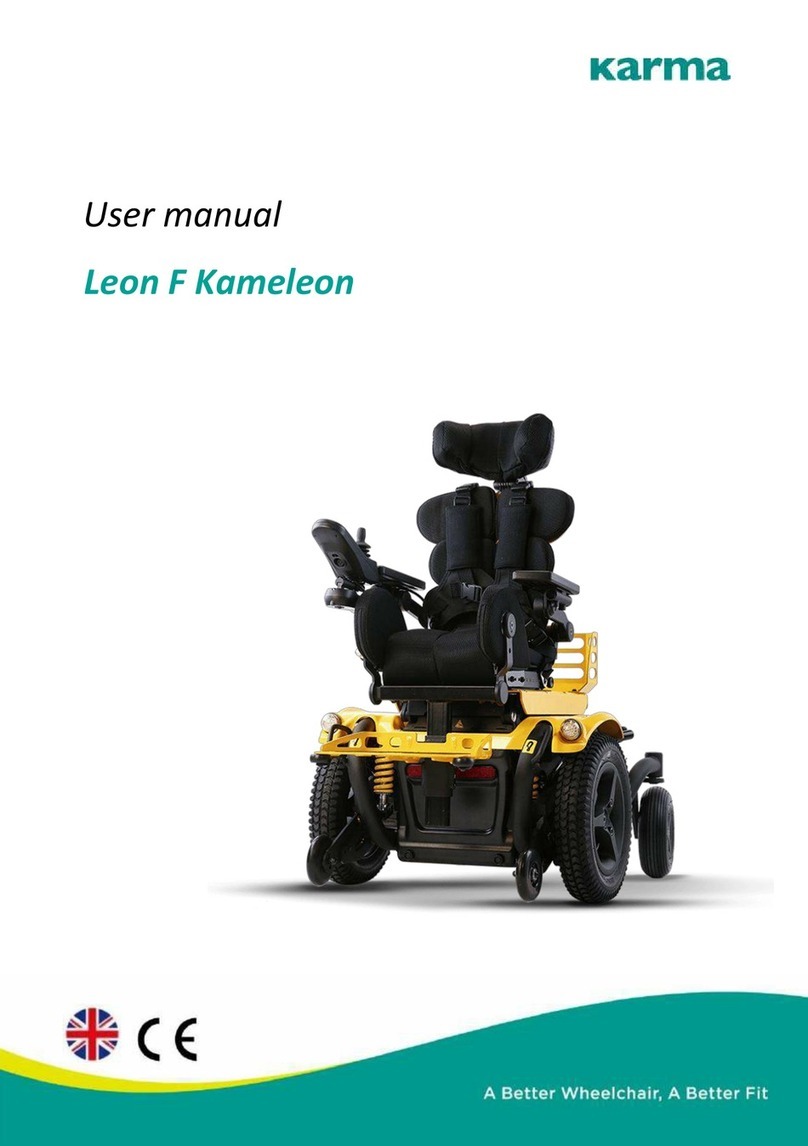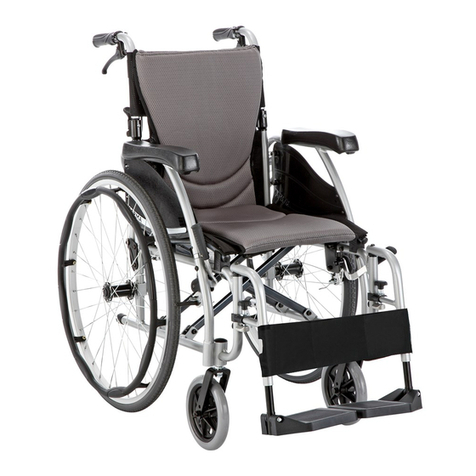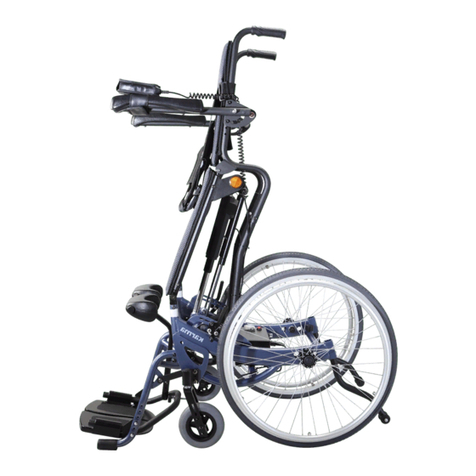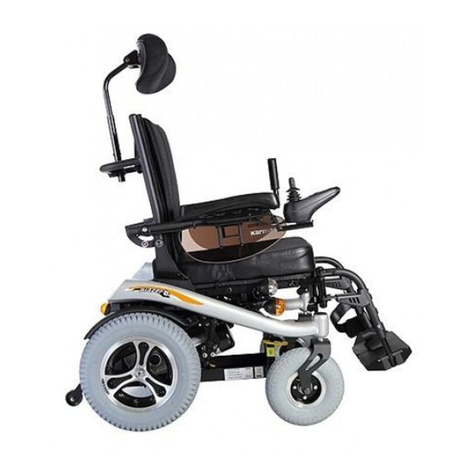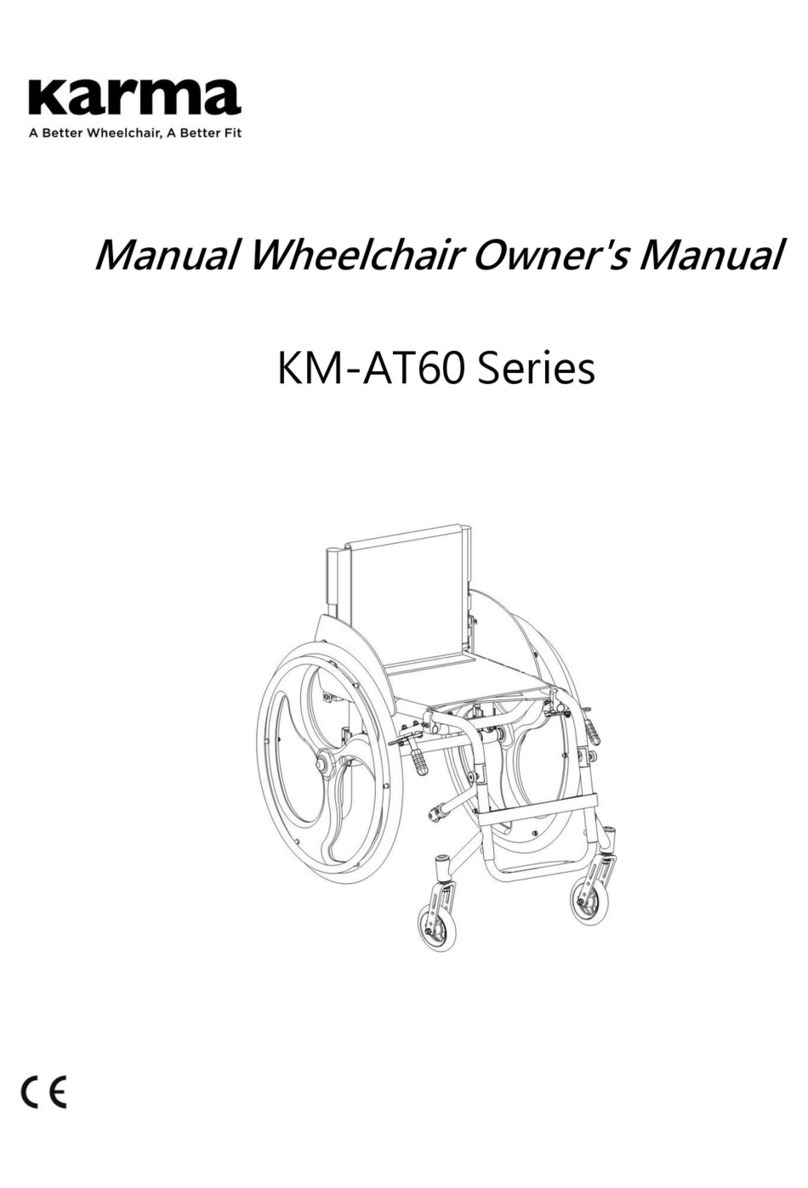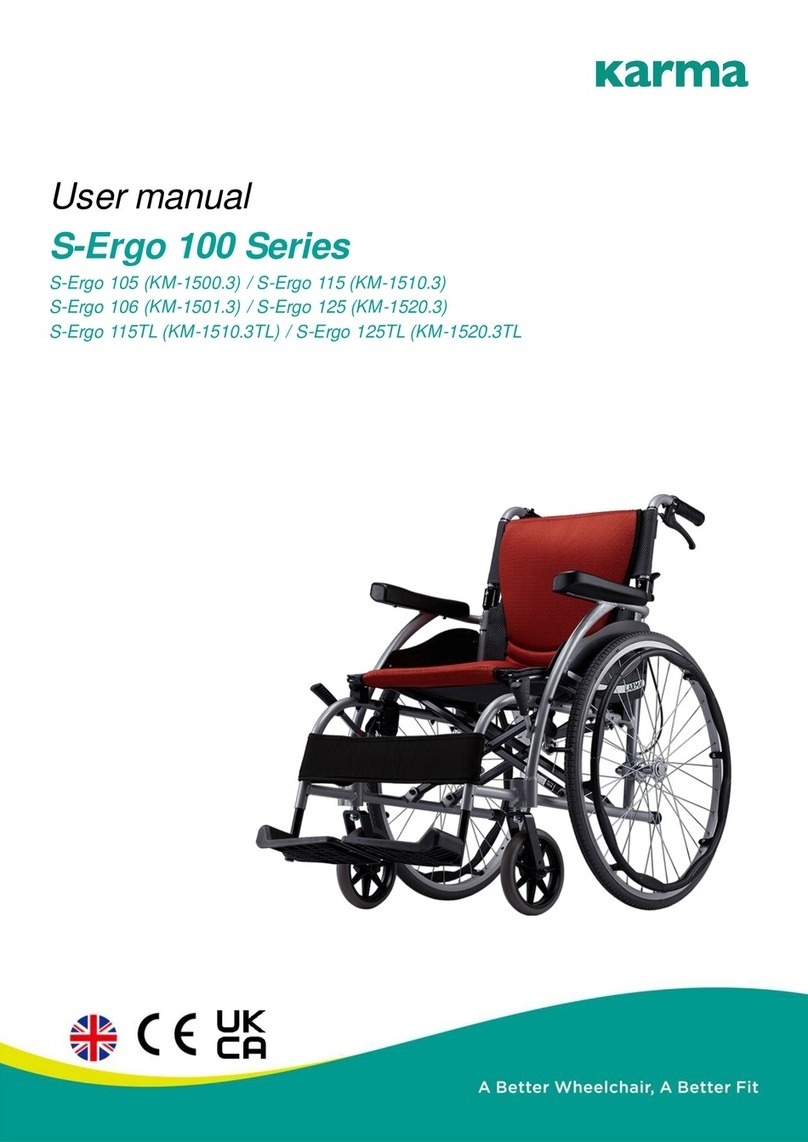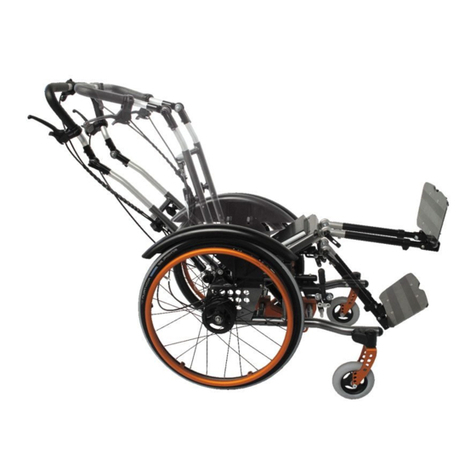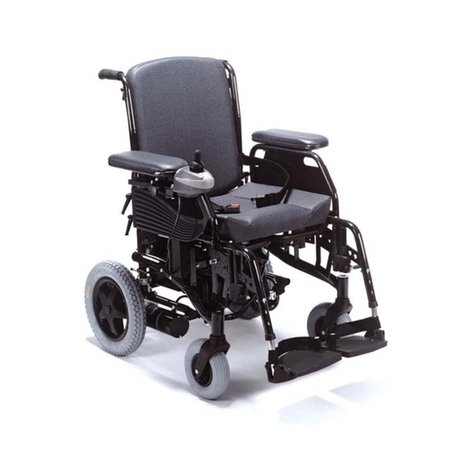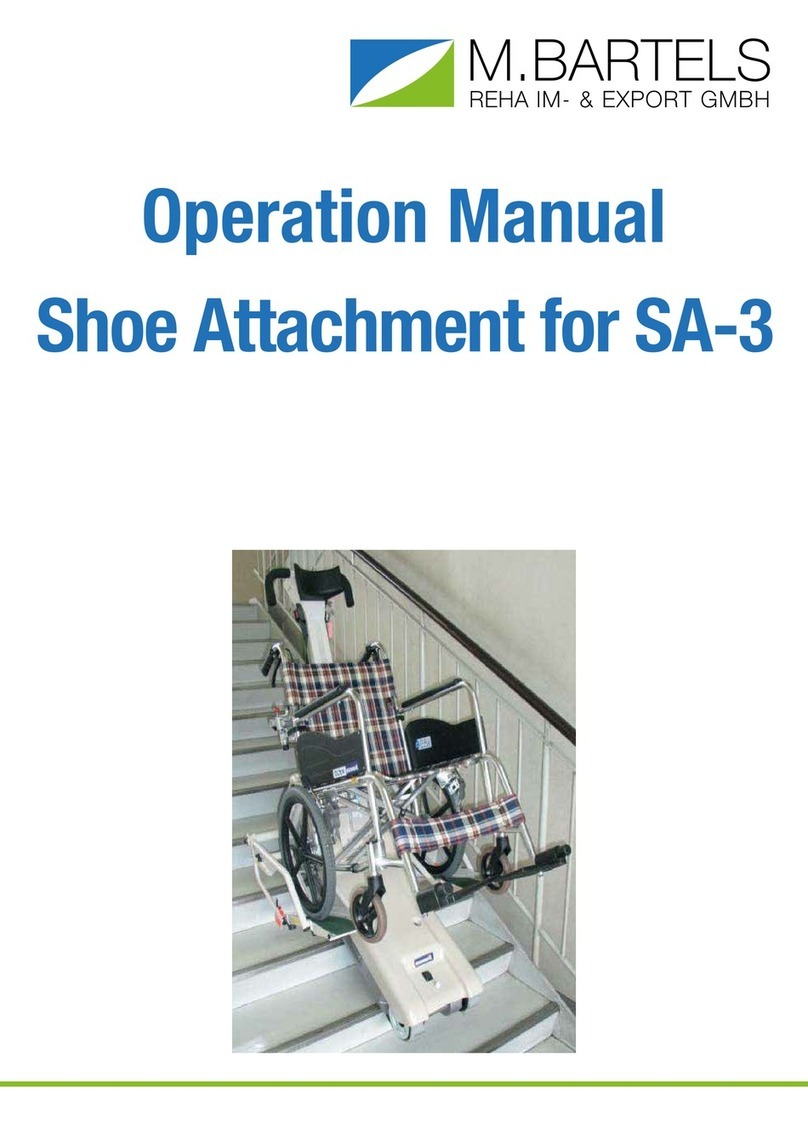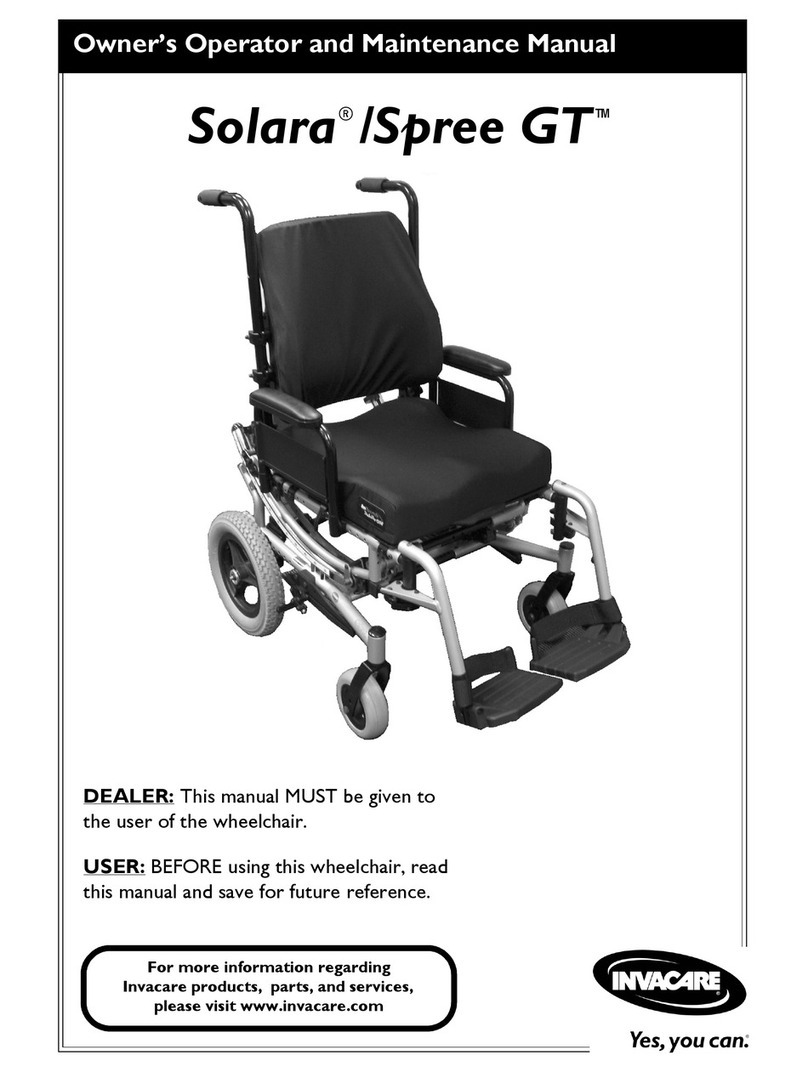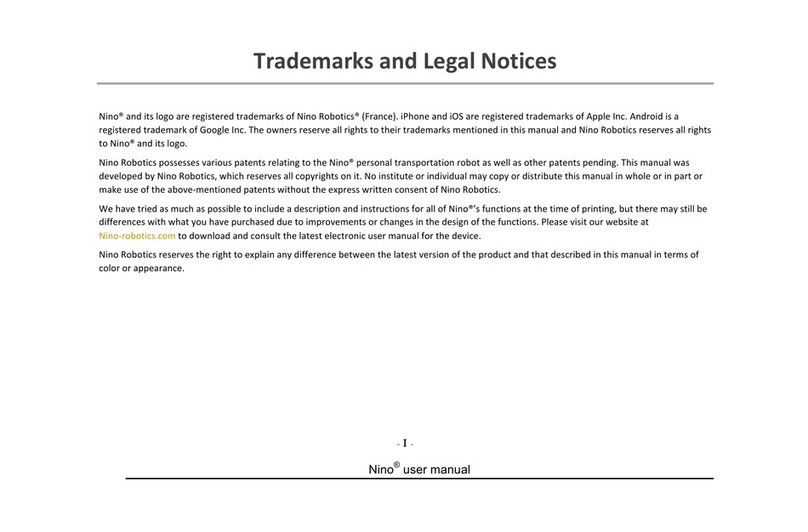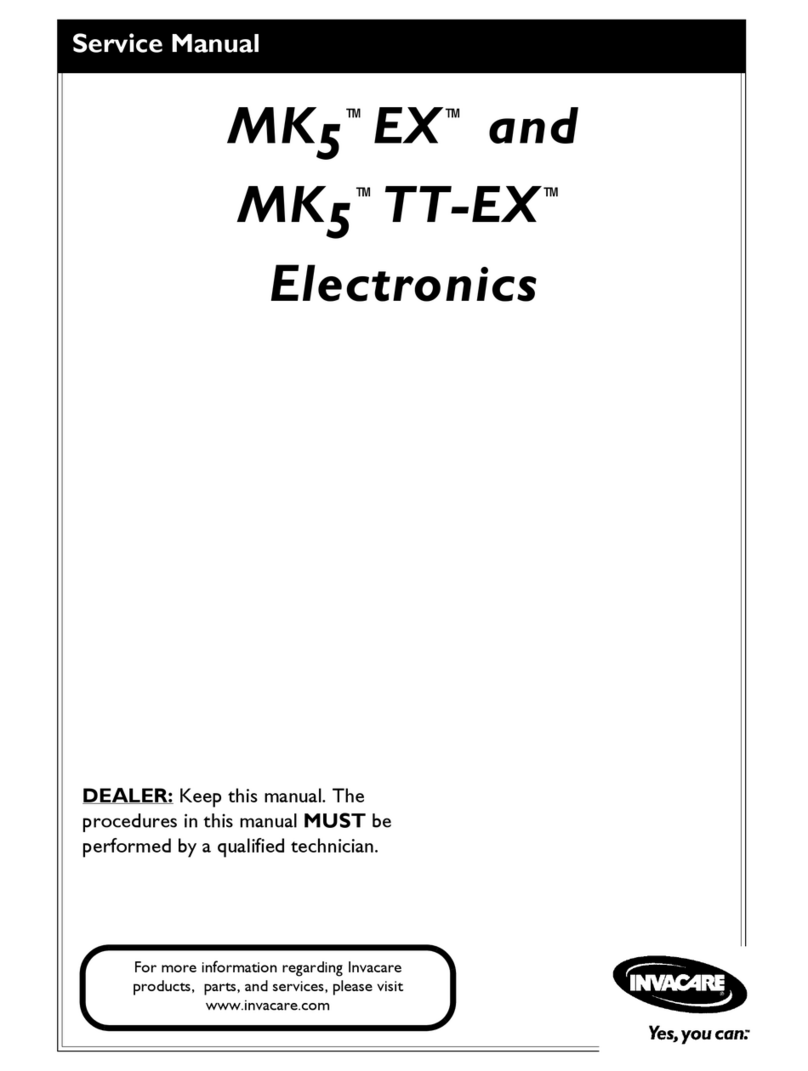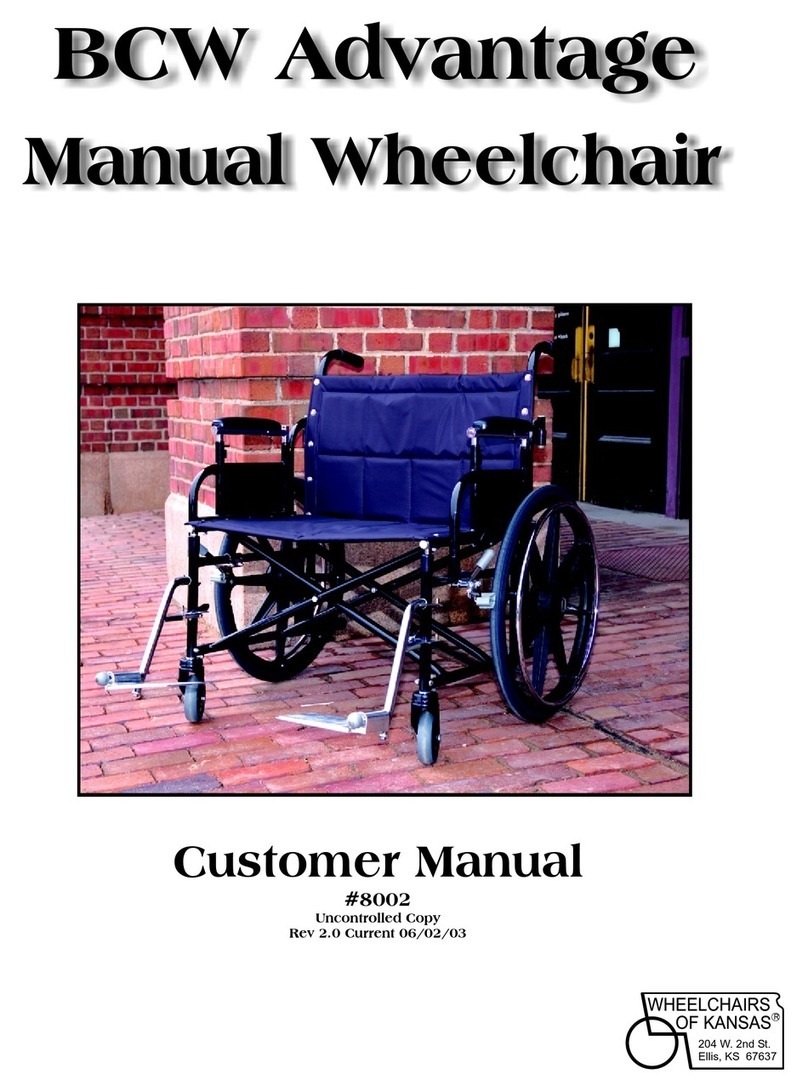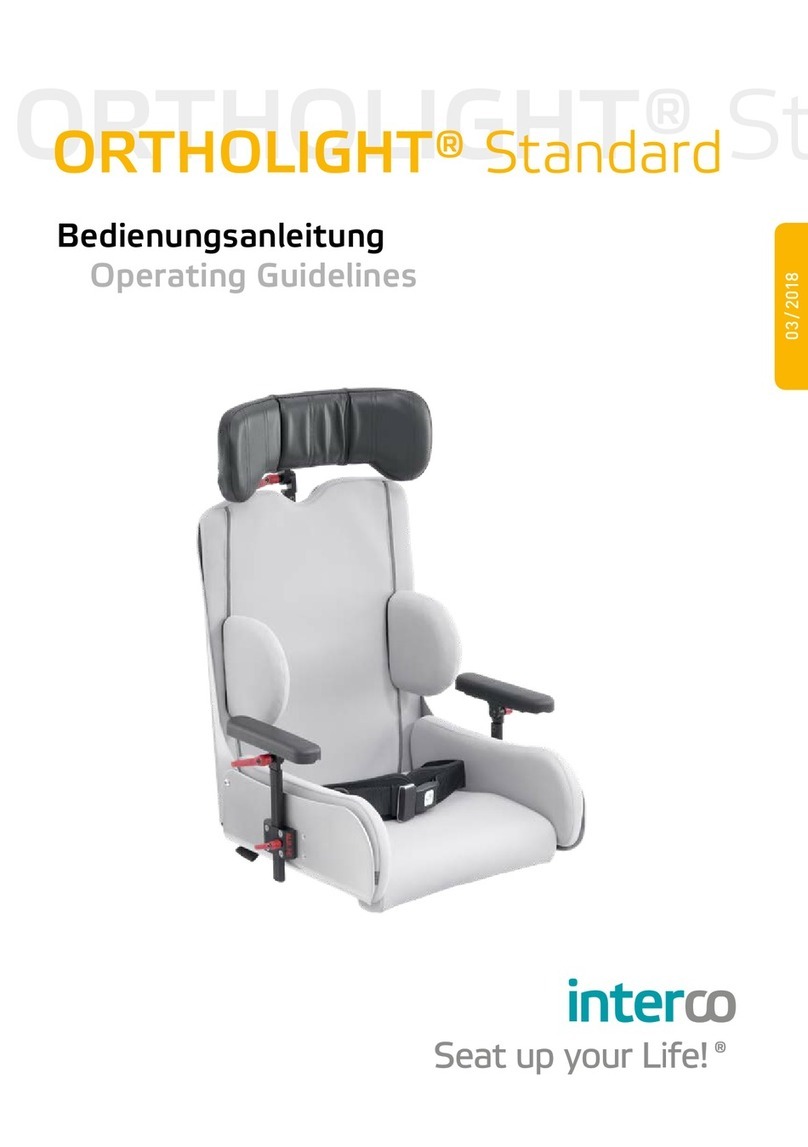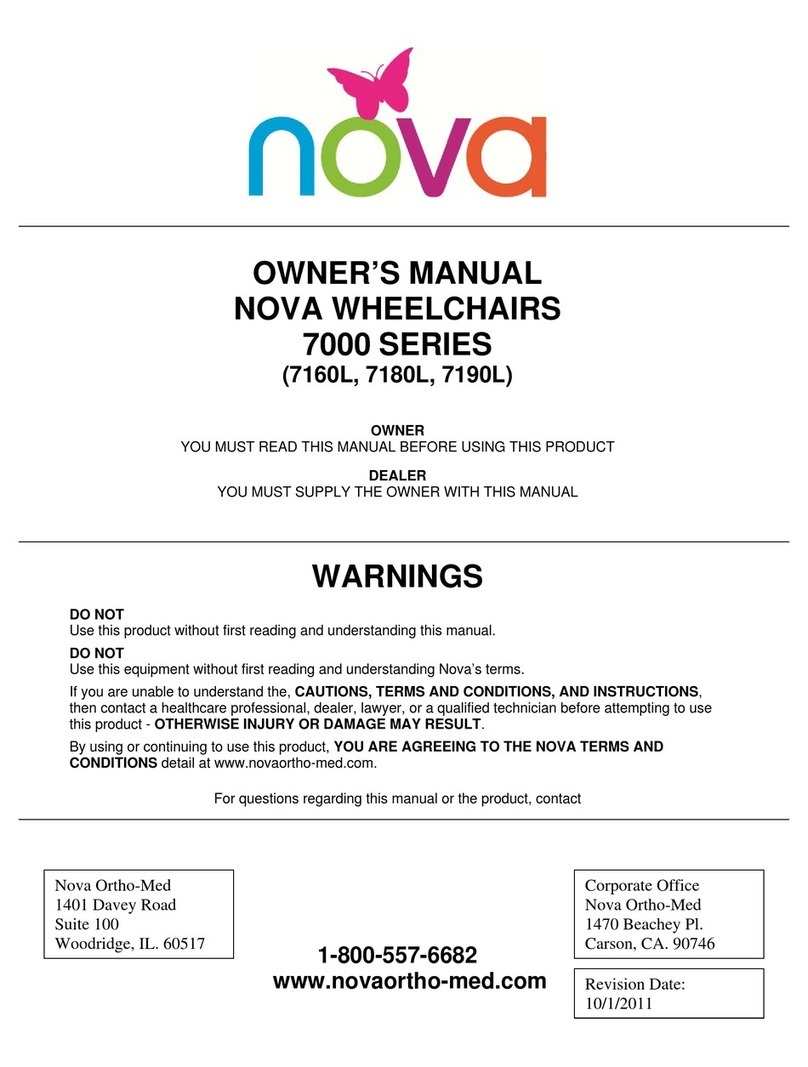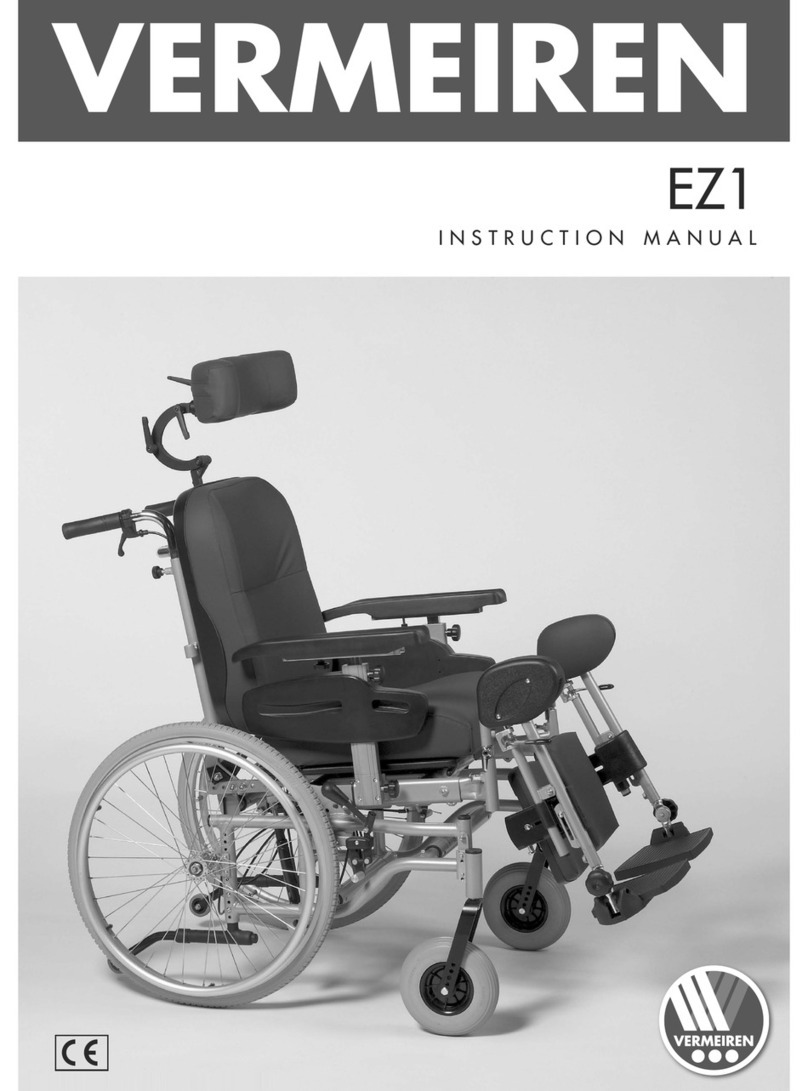7
15.3 stopping the wheelchair ___________________________________ 84
16 using the powered seat functions _______________________________ 84
17 using additional function of the wheelchair menu___________________ 85
17 handling the mechanical brakes ________________________________ 86
17.1 release the mechanical brakes _____________________________ 86
18 charging the maintenance free batteries__________________________87
18.1 battery level ____________________________________________87
18.2 charging socket _________________________________________ 88
18.3 disposal of broken or worn out batteries ______________________90
19 transport of the wheelchair ____________________________________91
19.1 transportation guideline ___________________________________93
19.2 safety belt______________________________________________94
19.3 transportation on an airplane _______________________________97
20 maintenance and repairs______________________________________ 98
20.1 battery charging _________________________________________ 98
20.2 short term storage _______________________________________ 98
20.3 long term storage________________________________________ 99
20.4 tools_________________________________________________100
20.5 wheels and tires ________________________________________101
20.5.1 puncture repair _____________________________________ 101
exploded view of front wheel __________________________________ 101
20.6 cleaning ______________________________________________ 102
20.6.1 upholstery, cloth / 3d mesh____________________________ 102
20.6.2 metal surfaces______________________________________ 102
20.6.3 plastic covers ______________________________________102
20.7 brake release, freewheel mode ____________________________ 103
20.8 battery replacement _____________________________________103
20.9 replacing the main fuse __________________________________105
21 Refurbishment and re-use of the product. _______________________ 106

